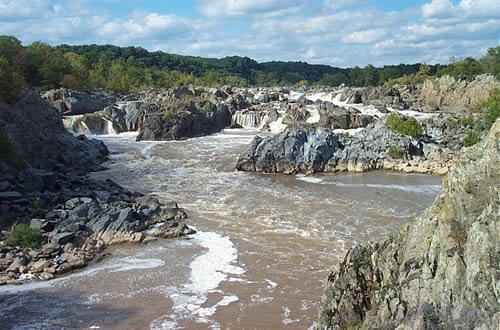Tuesday, June 25, 2019
Defining Biodiversity
Biodiversity is the term used to describe the variety of biota in a given region (from very large to microscopic). There are 3 main subsets of biodiversity that can serve as indicators of the state of ecosystems - species diversity, habitat diversity, and genetic diversity. Some even refer to a fourth type of biodiversity called functional biodiversity, which involves the behaviors of organisms in an ecosystem. Species diversity is measured according to an ecosystem’s richness, which is how many different forms of life are present, and its evenness, which is the degree to which the numbers of the different populations are similar. Biodiversity has both functional and intrinsic value in ecosystems, as it is directly correlated with the stability of ecosystems and weaves such a delicate complexity that it warrants appreciation of its aesthetic.
Biodiversity Study Area
I decided on Great Falls Park for my study area primarily because of its proximity to the school in which I teach Earth Science. It will be good for me to be informed of the formations and processes that occur(red) in this national park, as well as the biodiversity that exists with any identified concerns, in order to provide for students real-world connection, and project-based learning opportunities with field trip potential. I like to point out to my students the links between geography/earth science and human society, which is very evident in the history of Great Falls. I also am choosing Great Falls Park because of personal relevance, having grown up in the town of Great Falls, VA. I have visited the park countless times and investigated the geology of the gorge before.
Teaching IRL
I am an Earth and Environmental Science teacher to grades 9-12 and I am always looking for ways to impress upon my students the magnitude and complexity of Earth processes. I often refer to our science as macro-science. Macro in the sense that we generally study our content from the systems perspective, where we examine all the interrelated parts and the role they play in the function of the whole. But also Macro in the sense that we do not necessarily need micro-scopes and models to observe the concepts we study. Unlike Chemistry, Biology, and Physics, Earth and Environmental science does not involve too many abstract topics like atomic structure, or the addition/subtraction of forces. Instead Earth and Environmental Science involves the stuff of our everyday observations and experiences - landscapes, seascapes, the air we breathe, and the ecosystems of which we are a part. In studying Earth and Environmental Science we connect experience with the spheres that make up the entire Earth system, and it can be powerful to ponder the (seemingly) simpler things in life.
In the classroom, we try to come up with learning activities that are based in real-world situations. In teaching geology, freshwater systems, and biodiversity & conservation, it would be very helpful to know all about Great Falls Park in order to connect this amazing local resource to our content. My goal is to learn about the park, create student activities based on the park, and hopefully facilitate a culminating field trip to the park.
In the classroom, we try to come up with learning activities that are based in real-world situations. In teaching geology, freshwater systems, and biodiversity & conservation, it would be very helpful to know all about Great Falls Park in order to connect this amazing local resource to our content. My goal is to learn about the park, create student activities based on the park, and hopefully facilitate a culminating field trip to the park.
Why GFP?
Great Falls Park is a small U.S. National Park located on the southern banks of the Potomac River in Fairfax County, VA. It is 800 acres of woodland and riparian ecosystems, characterized by steep, rocky river sides, with trails and overlooks maintained for the pleasure and safety of visitors. The falls for which the park is named, are created by a drop in elevation of the Potomac of more than 75 feet in less than a mile (NPS, 2015).
The purpose of this blog is to help me and others become more familiar with the biodiversity, geologic and social history, and other fascinating features of Great Falls Park, in order to promote stewardship of this local gem and National Park. I was born and raised in the town of Great Falls, VA and frequently visited the park with family and friends for hikes, runs, picnics, and taking in the scenery. It was not until I was a teenager that I realized that it is a National Park, which carries with it significance. It is steeped in geologic history, as well as Native and Colonial American history, and while it changes day by day according to the ebb and flow of the complex freshwater system of which it is a part, it remains the same striking example of the expanse that is Earth's history, the power of nature, and the intersection of environment and human society.
Subscribe to:
Posts (Atom)
